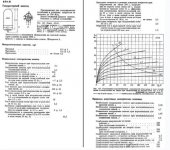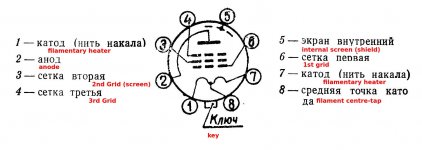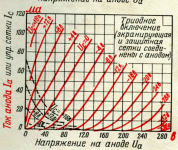I think I'll just stick with 6C4C and 4p1l, they are available and made at a time when the tooling in russia was of high quality and known to have excellent vacuum.
I hope I didn't step on anny toes on my comments about sophias' PX4, it can't be expected of any modern company/country to duplicate that magic that was made in Britain's heyday. No one make's a 60's Austin Healey any more either
I hope I didn't step on anny toes on my comments about sophias' PX4, it can't be expected of any modern company/country to duplicate that magic that was made in Britain's heyday. No one make's a 60's Austin Healey any more either
Have you considered high frequency AC for the filaments? EC Balancing Act does it at 40 KHz.
Some people think it contributes to the open sound of that amp.
Yes It is done by modifying a smps so you don't really get a true sine wave (there are a lot of upper harmonics). The bigger issue is its become fairly common for good DAC's to use 40khz as a dither frequency for oversampling so I'm not a fan of introducing a source of noise modulation with two choppy 40khz signals.
Rod and Iko's CCS based designs offer the least risk, they are relatively simple and straight foward.
Really we wouldn't even be considering building a DIY DHT headamp 2 years ago before Rod shared his design here on DIYA.
This one is my favourite:
http://www.next-tube.com/DataSheets/tubes/4p1l.djvu
.... Russian language, but it's well worth learning some, for many of the good data sheets available from Russia!
Please see also the Triode (Триод) curves posted earlier in this thread.
http://www.next-tube.com/DataSheets/tubes/4p1l.djvu
.... Russian language, but it's well worth learning some, for many of the good data sheets available from Russia!
Please see also the Triode (Триод) curves posted earlier in this thread.
Can't open the archive, I have the attached file but can't read it is very small and is also in Russian. Sorry my ignorance still can know how to understand the curves but I need to know the pins connection.
Attachments
Last edited:
<snip>... Just heating the 20V/3A filament of the GM70 to headphone standards of low noise is a major challenge, even for experience builders, IMHO. It's just an opinion, so don't shoot.
Quite a number of builders are using my GM70 heater kit now. When built according to the manual, the performance is as good as the one used in #26-DHT preamps - perfectly silent. This version has a very slight soft-start, to protect the filaments, and control dissipation in the pass-transistors.
The GM-70s seem to need some baking before use, to reduce gas (and possible damp ingress) - but they are well-behaved as a power amplifier, and fairly consistent, too.
Whether 140-160W of filament power, and ~200W of HT power are reasonable costs for generating a few mW of output for headphones, is another matter! I suppose the answer to that will depend on how hot the climate is in your location. Suffice to say that in the UK, it's no problem!
Merlin,
This is a good source of info on the 4P1l.
http://www.klausmobile.narod.ru/testerfiles/4p1l.htm
This is a good source of info on the 4P1l.
http://www.klausmobile.narod.ru/testerfiles/4p1l.htm
Thanks regal but still don't see the pins connections.
See attached.
And Rod, I swear the next person who says a headphone only needs a few millwatts of power really needs to buy a pair of modern orthos, listen to them then measure the voltage *** their coils, the are more demandinng of the output tube than a pair of klipsch-horns filling a living room.
Attachments
Triode (Триод) curves posted earlier in this thread.
Attachments
OK, what peak voltage do we need to aim for?
And does the impedance vary over the frequency range? Is 38 ohm only a nominal?
We should be clear about the goals. If the Orthos are so different, it may not be optimum to have a single design here.
We need 2-3V rms across the 38 voice-coil of the more efficient orthos (HE-500). Rounding up that is 9Vp-p. So with a 5k primary we need the valve to swing about 100Vp-p, for my average listening level.The manufacturer of these headphones recommends twice that (1W) for this newest model.
Their flagship model has a recommendation of 5W into 50 ohms (50Vp-p) which is the one the folks on the west coat are using the GM70 for. I've ruled that out for this discussion as it is a huge requirement for an SET amp.
But I believe the newest model (HE-500) 1W into 38 ohms is a resonable design goal which hopefully won't require one to build two amplifiers to keep up with headphone technology.
My remaining questions at this point before finalizing the design are pretty simple and starts with:
1. Can a 4P1L deliver a 100Vp-p to 200Vp-p swing? Or do we be safe and step up to a 2A3/6C4C?
The impedance curve is very flat with orthos
Last edited:
Regarding the PX4 and 307A, I agree.
Still, some people do have some 307a, so here's the draft I have, in which the 307a is biased a bit on the hot side. The thd simulation is a case scenario that's interesting to me. A relatively realistic volume level for my headphones.
Compare that with having gm-70 in the output stage. :/
The question is, would anyone ever hear the difference?
Will be a good idea OPT with multi tap secondaries 4-8-32-300 ohms this way we have headphone & power amp? or if can't give very good perfomance will use two OPTs: one for headphones & other for loudspeakers?
- Home
- Amplifiers
- Tubes / Valves
- The all DHT SET Headphone Amp


